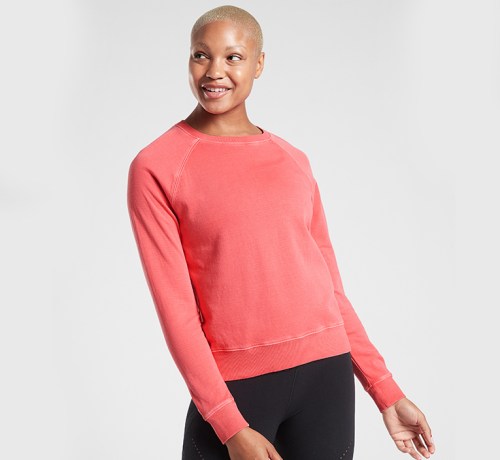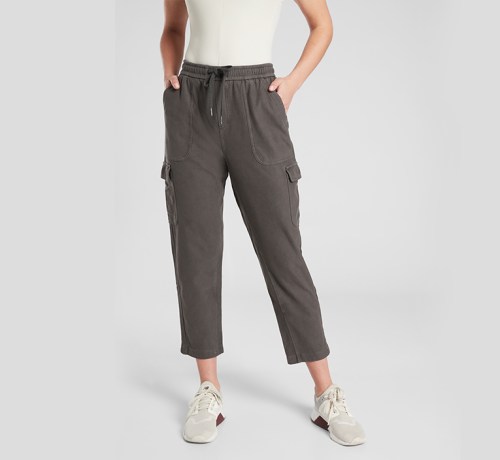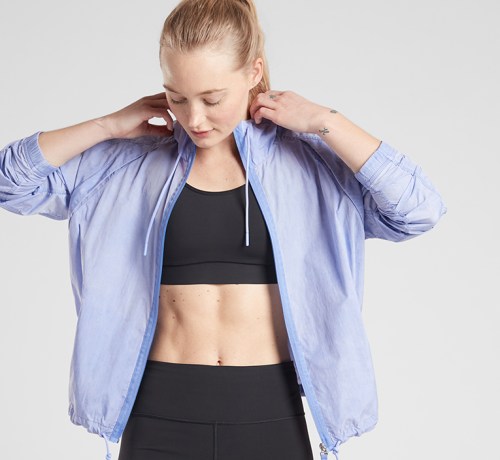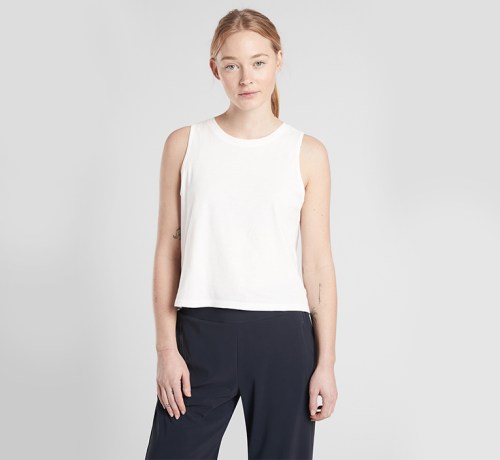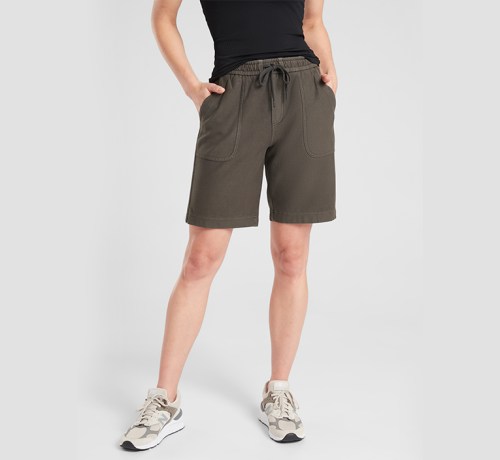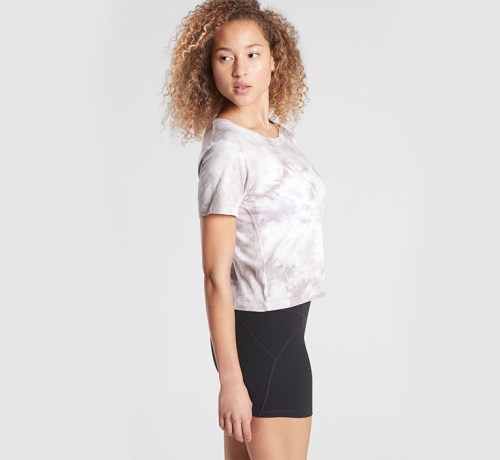3 Reasons to Care About Sustainable Fashion, Plus One Brand That Gets a Gold Star
What's probably not running through your mind: Thinking through how, exactly, you're going to go about getting rid of your most recent favorite purchase when you inevitably wear it out from loving it so much.
Not to take the shine off your shopping spree, but since 8.9 million tons of clothes end up in landfills each year (more on that below) this thought is actually something you might want to consider—and shopping at stores that prioritize the environment can help.
Instead of sifting through racks of clothing and dutifully scanning for environmentally friendly labels (which can be hard to find, FYI), shopping at certified B-Corps, like Athleta, means the company has committed to taking steps toward improving both the community and the environment. "Now more than ever, customers are researching brands the same way they are researching non-GMO and organic foods in the grocery store," says Sheila Shekar Pollak, chief marketing officer at Athleta.
"Now more than ever, customers are researching brands the same way they are researching non-GMO and organic foods in the grocery store."
In 2017, Athleta came up with a handful of goals associated with becoming a more eco-friendly and purpose-driven company, including helping you with shopping sustainably and providing more than 10,000 women with life skills and career support through Fair Trade and P.A.C.E. programs, Pollak says.
Still not convinced you should edit that dressing-room internal monologue? Read on for three ways the clothing industry can affect the environment that might just change the way you think.
Keep scrolling for 3 reasons you should care about shopping sustainably.
1. Landfills are loaded with old clothes
Even if you try to donate your unwanted clothes rather than chuck them in the trash, a lot of apparel does make its way to a landfill. In 2017, the Environmental Protection Agency reported that 8.9 million tons of clothing and footwear ended up in landfills.
One way you can avoid becoming part of this statistic is by picking out clothing made with long-lasting fabrics like organic cotton—so you're more likely to keep it in your closet and out of the landfill.
2. Non-sustainable fabrics take forever to break down
Many fabrics—especially those used to make activewear—can take decades to break down (polyester, for example, can take anywhere from 20 to 200 years), which is why Athleta is aiming to use more sustainable materials.
"One of the biggest goals was to have 80 percent of our apparel incorporate sustainable fibers while making sure we’ve done so without sacrificing the performance or beauty of our apparel, [and] so far we’ve topped 70 percent," Pollak says.
Want some eco-friendly apparel recs? Athleta's most sustainable performance fabric to date is the new SuperSonic fabric, which is made from recycled materials and used in the Ultimate Stash Pocket Colorblock Laser Cut ⅞ Tight and The Ultimate Printed Bra in SuperSonic. Pollak's personal favorite Farallon Bermuda shorts are made with organic cotton, meaning they don’t contain any harmful pesticides.
3. Clothing isn't the only thing impacting the environment
It's not just old clothes that are thrown away. Tons of packaging and other materials are, too. In 2017, over 80 million tons of packaging ended up in landfills, according to the EPA.
While all that packaging definitely isn't just from clothing brands, Athleta has committed to diverting 80 percent of shipping-packaging waste from landfills, and has also recently announced a renewable energy partnership that will fully offset the power consumption of all Athleta operations.
"As a community, it’s our responsibility to protect our Earth for the next generation to come," Pollak says. "It will take all of us working together." And while shopping sustainably is just one part of the puzzle, adding brands that care about the environment to your athleisure repertoire make it easier to be a little more green.
Sponsored by Athleta
Photos: Athleta
Loading More Posts...
